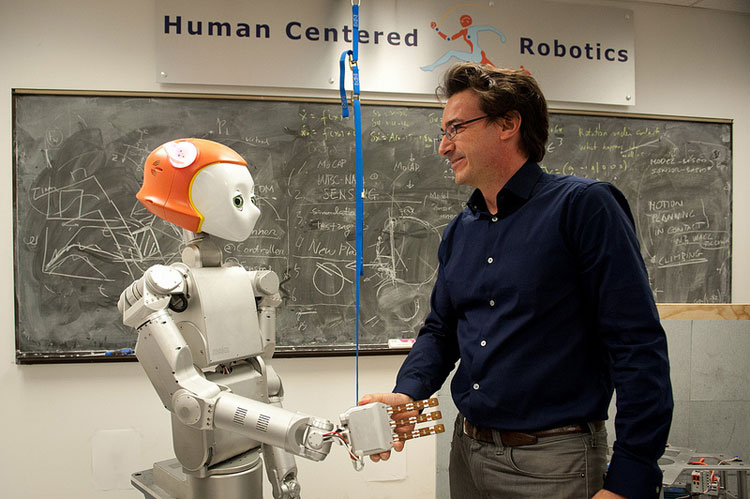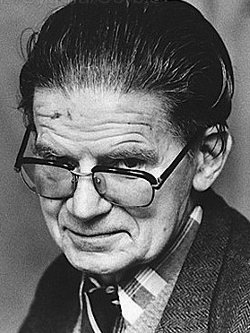Introduction
Time-space convergence: Digital time clocks are different around the globe. Five-time zone digital clocks tell us different time zones on the planet and are a popular buy. The digital watch time has been ticking faster in space and creative art fields but slower in gender cultures. The AM FM, digital clock radio has been replaced by a 24/7 lifestyle.
Led time clock, digital watch time
But the world is shrinking, and the shrinkage is not uniform. This phenomenon is happening because technological innovation and transportation growth are uneven worldwide. There’s a big time gap when it comes to digital culture across the world’s regions. The digital time clock is, therefore – not uniform.
In developing countries, for example, investments in transportation and infrastructure are higher in the cities than in the rural areas. The geographical concentration of capital in urban locations is more significant because of rising demand. Therefore, digital experience varies.
Different from (Dicken, 2011, pp. 86-87), small towns and rural areas are not benefitting from such projects because financial returns are low. However, developments in parallel communication technologies, such as transportation and telecommunications, are pushing space-time to zero in developed countries. The experience of digital culture is felt strongly in advanced nations. The speed of uninterrupted broadband has reduced space and time dimensions to zero.
An example of new technologies is mobile phones; depending upon the location and time, a phone call at an inconsiderate hour can disturb someone’s sleep. The explosion of mobile phone ownership and a shift from fixed to mobile cellular telephony has led to explosive innovation in mobile phone technology. Communication on the move is transforming society’s culture digitally. Mobile phones have integrated multi-function devices that can perform any action instantly. Furthermore, moving towards a wireless world is generating enormous social and economic changes in the environment.
Yet, the digital time clock is divided, and it is creating a world of communication that is uneven. Recent research suggests that space and time matter is plastic. Some parts of the globe are shrinking because of advancement in all spheres, whereas some are benefiting relatively, and the rural regions benefit in one or the other areas of development. To think that the Internet is timeless, space-less, and the place-less phenomenon is not true depending upon geographical location and the capacity of the Internet between the regions of the world (Dicken, 2011, pp. 92-93)
This chapter looks at how time is moving in space, the impact of time on gender development, and the history of the digital time clock of time.
Digitizing documents, photographs, television, newspaper, diary, and almost anything can be accessed anywhere for free. The critical problem is that US, Germany, and UK are the forerunners.
In this section, it will take a moment to adjust to the expansion of the inner space of the SOLARIUM as it takes the reader far away from the present time. The reading on this page requires a rapid alteration between play and imagination or is sometimes left flickering between the two.
Therefore, the spatial approach of the writing style in this chapter gives an experience of movement and makes the reader feel that he is far away in time or very close to it. The author tries to create distance for the reader by creating an indistinct sense of space inside the reader’s head at times, but at the same time, the information is as accurate as our outer senses (Carey, 2005, pp. 234-235).
Carey, J., 2005. What Good Are The ARTS. London: Faber and Faber.
Different ‘rhythms of time ‘ vary the digital time clock throughout human history: Traditional time is organized around the rhythms of seasons versus the generic clock time of the factory. The workforce, as against the machine labor time. Time is relative.

We say things are changing all the time. Just about everything that exists is changing in the universe, or the implications of evolutionary changes are slow and to a point where it is imperceptible.
However, in certain parts of the world or ” some remote corners of this universe, change is taking place rapidly. Here, I am talking about those “clever animals” that extend the augmented capacity by manipulating the surrounding environment through technology. The ability to distinguish a clever human-animal who enhances technology from the other less clever species living in the same world.
Technology has become a precondition to human existence because it enables humans to think of themselves as clever. Otherwise, they were annihilating themselves through nuclear wars or global warming.
In a nutshell, Issac Newton’s theories in the 17th century on absolute time were expressed as universal and passing uniformly for everyone and everything. These theories were challenged by Einstein’s Time theories. E=mc squared.

As technology changes with time, so do the relationship with the environment of the digital time clock. Technological change has gathered momentum in the Western world over the last hundred years. Before that, change was less imperceptible.
Technological development in the developed world has at least seen more significant progress in the modern era than in human history. The rapid change rate can be measured on a time graph to show the difference in humanoid technological advancement. For example, if technical complexity is plotted on the vertical axis and time on the horizontal, then the likely result would indicate a line that barely crept above the baseline until it almost reached the further edge. At that point, it would curve dramatically until it was practically vertical.
The exponential rate of technological development is hard to grasp because the growth rate concerning size is drastically sharp. The concomitants of this day and age of computers from flint tools suggest that technological prostheses have helped humans to digitize our culture.

If we look through the World System Theories of Capitalism, digital technology evolved essentially as part of these historical developments.
The computerization of banking, international currency exchange
and trading has dramatically aided the rise of globalization and financial
liberalization. The possibilities of convergence and integration
that digital technology offers has led to it dominating technical
developments in media and communications.
Computers are also an essential means of managing and manipulating the vast amounts of data that large techno-scientific projects require.
The concurrent development of science, media and capital under
the aegis of digital technology produces a fast-forward effect
in which everything appears to take place at an accelerated rate and
to make a dramatic change quickly. This excites the person, and excitement in the present now has got to be the most exhilarating experience. If we rewind the clock back…..we explore the history of time.
The History of Time :
How time has changed is illustrated in an infographic chart ;
Open link: https://magic.piktochart.com/embed/13268794-untitled-infographic

Artificial Inteligence
The discussions on ‘Digital Time’ concern time culture and artificial intelligence. To think that human beings can be distinguished from machines is now becoming seemingly delusional in capitalist cultures where ‘Time is money.’
This section evaluates the metaphysical challenges faced by the people on this planet. Today society is becoming incoherent, increasingly fragmented, concurrently global and local, and challenging space and time as the calendars are turning upside down in a 24/7 community. If we think about it, digital technology is transforming our lives faster than the evolutionary changes that are moving slower. What impact has technology had on you?
The hegemony of clock time was not confined to developed countries but spread globally as a historical process of colonialism, imperialism, and globalization.
The problem with the ideology of the digital time clock is that it is measured in different time zones. For example, Greenwich Mean Time (GMT), started in 1884, needs to be updated!
Time is no longer limited to a confined space and boundaries of disciplined work. The ‘world time’ is linear, quantifiable, and synchronized by GMT. This form of time-temporal imperialism has sustained the idea of western time culture as being more developed and silenced non-western cultures.
However, Algorithmic Cultures are shaping our lives without space and time restrictions. The above discussions raise some interesting questions about how time is evolving.
Effects of 24/7 lifestyle on the human brain
The following paragraph takes the reader on a journey in the time capsule to explore how living in our digital home capsules can actually disturb the mind and sleep. For example, SOLARIUS gives insight into how sleeping patterns are affected. This film was about virtual time, where the invisibility of time affects sleeping patterns because of the constant light in the space station.

This paragraph reviews Andrei Tarkovsky’s remarkable film of the 1960s, SOLARIS is becoming a reality today. The movie was well advanced and ahead of its time; the film is set on the Solaris space station where two cosmonauts die mysteriously; the astronauts are in a different time zone, that is to say, where there are no barriers of day or night.
In the film, psychologist scientist Kris Kelvin is dispatched to investigate the strange phenomenon affecting the Solaris crew.
This Russian film production by Andrey Tarkovsky brilliantly conceptualizes how human beings confined in a space station with artificial lighting and lack of sleep affect consciousness after some time.
The actor faces those same challenges, which sends him to the darkest recesses of his consciousness and how his thoughts on love and humanity are challenged on the space station. The film shows how insomnia can impact an individual’s life and, in this case, a scientist, so what about ordinary people? The film is so much to think about at the metaphysical level.
Insomnia is a chronic condition, and in the film, the actor’s memory creates snippets of a loved one from the past, and he expresses paranoia, hallucination, and loneliness in space. He is deeply affected by the alien world and the mystery surrounding it. Much of what is happening today as people are not sleeping and spending more time with machines and brightly lit artificial lighting or in urban cities where the time to sleep is replaced by 24/7 nightlife. The notion of portraying sleeplessness as bearable and eventually, after repeated denials and repression, the mind attains freedom.
The office or the computer station becomes our own private space station, and the user becomes disconnected from the outside world and public space. Too much time spent on the laptop or mobile phones can lead human beings towards loneliness and anxiety, but as we saw in the film, Solarius can lead us to emancipation, liberation, and freedom. The following paragraph discusses the expansion of time around the clock.

SLEEP v/s 24/7
The case is no longer about sleep governed by light and darkness or between recuperation and work or physical activity and rest. Sleep is not monolithic, but the patterns and forms of sleep are variegated for centuries.
The minds of human beings are constantly switched on, even at night, by the number of awake people checking their messages and data. The notion of sleep is no longer a natural process and has become incomparable with capitalist mode. If this argument is agreeable, then there is no difference between the machine-made-designation and “sleep mode.”
Today, exposure to fatal thresholds such as ecological disturbances in the environment and our bodies assimilating to the ever-expanding exhortation of working without a pause contributes to disturbed sleeping patterns.
Given the enormity of economic stakes, sleeping time is reduced in a digital time clock society. It can be disorienting! Therefore, the disillusionment between machines and man was simplified at the start of this discussion. As in the race of time and technology, machines are taking over, and humans may feel alienated on our own planet. While scientists are waiting to get signals from more advanced worlds as we constantly evolve in space and time.

But wait a moment. As we shall see, there are distinct differences between gender in time on earth as well, and interestingly, exploring the effects of time on gender.
On the one hand, the explanation of how sleep is affected by the dynamics of modernization and capitalism, and on the other hand, the revolution of time and political awakening concerning gender.
Gender & Politics of Time (Book Review)
The political importance of discourse keeps changing with time. From linking childcare, domestic violence, and female genital mutilation to promoting sexual equality. To, patriarchal structures in societies and capitalism are fluid and variable.
Nevertheless, they have conflicted locally and globally, opening up possibilities for cross-cutting by feminist intervention. Awareness of the feminist politics of the digital time clock is essential because the stubborn reality of male domination prevails.
How women and men are socially constructed in societies depends upon several variables, such as socioeconomic and political constraints. Although nature’s call of mensuration and childbirth gives women, a special bond with time and the ignoring of womanly qualities by ‘malestream ‘theorists and arguments on hormonal differences is debatable over the issue of digital time clock machines. “The objective `of trying to understand what is troubling about this world is to change it.”
Even as we progress to digital time clock theories: the gender difference arguments are embedded. From time immemorial Feminist views are interlocked with ideas and experiences of time on gender. Moreover, in most societies worldwide, male privileges are integral and have hardly changed with the digital time clock.
The gender argument has been stagnant, so I am mentioning it. The internet has potentially transformed the injustices done to women as more and more women are playing a significant role in neutralizing gender roles of deviance.
But, in daily life, gender relationships require individual acts and state policies to support them. However, on a positive note, small changes can also have a cumulative effect on gender justice. Male digital time clocks, on the other hand, leave women at a double disadvantage because women get shadowed into male time.
Therefore a deconstruction of what is male time and women’s time in the framework of social time requires a contingent approach. As gender identities are complex, and if they are looked at as multiple intellectual human beings, then male and female time are dissolved. The above paragraph explains the dual nature of digital time clocks for men and women.
However, in the following section digital time clock has been ticking faster in space theories on quantum physics aspects of space and time dimension.
The Theory of Relativity: Time is one-dimensional on earth but four-dimensional in space. The Einstein field theory identified the electromagnetic field and gravitational field. The area is infinite with no matter and material points. The functionality of the theory is based on vectors and speed.

Acknowledgment: YouTube subscriber Alvargona
Einstein’s big idea twin paradox(watch video Einstein’s twin) is: as you travel faster or if you find yourself on higher gravity, time ticks more slowly for you because photons (carriers of light) move at the speed of light time stops for the photons (which is light itself). And time does not lapse for the photon, which is a spooky thought as compared to a hundred billion hours of our time is zero time for the photon. The neurosnaptic thought rate slows down, including the environment, and this process happens in the subconscious mind. The speed of light is the same for everybody, and the laws of physics remain constant (time dilation). Einstein’s theory remains popular because it employed the Riemannian concept of space, as seen in the video above.

So, far discussions on TIME have been relatively complex. This section explores TIME and its significance to architecture. The concept of Time is imminent. Nevertheless, it has been a fundamental challenge to historical Time itself. Fundamentally because of the transformation between western scientific and cultural disciplines. It embodies the return of classical debates on the heterodox of Time, texts, and ideas in different eras.
Skeptics can argue, contradict, and debate the notion of Time on orthodox religious and scientific regimes. Both groups of thinkers are at tangents in their ways of thought. However, one thing remains TIME is not homogeneous, and the groups agree with that. Modernism theorists suggest that their research is intrinsically linked to antagonist philosophers of Greek and early Christian cosmologies. And that western religious/scientific orthodoxy is based on the preliminary hypothesis laid by Greek philosophers.
In the exemplary intellectual model of the twentieth-first century, the religious-scientific epidemiological viewpoint on modernism has remained constant throughout Western Theory. The causal and analogic relations of events have been clearly separated by TIME and Space. Or they have been separated by analytical divisions between academic disciplines. But on a deeper understanding, fundamental challenges have ruptured from the outside and challenged historical Time and the times the events took place. But the fact remains that TIME IS IMMANENT. (Kwinter, 2002, pp. 215-217)
TIME TRAVEL
Kwinter, S. (2002). Architecture of Time. London: Massachusetts Institute of Technology .
Breaking time barriers with reference to Art: Updated May 30, 2016

Art performances and practices have become digital, but there are two distinctions when comparing the history of art and tools. These are regarding time dimensions and how they impacted art and art objects.
To analyze how time, technology, and art are bound together, we would have to step back when no tools were required. Early human beings made the tools, and the history of art goes back tens of thousands of years. It was only in the 1950s that George Bastille introduced the idea of humans, tools, and time. To relate, the two eras from before the 1950s and after in which art existed had a common notion, and that is: art is primarily a game till today.
The main similarities between modern art and art objects are that making art objects requires playing, and the making of tools was the artist’s birth. Several common characteristics require the possession of devices and some relative skills in molding and control. Nevertheless, art s relation to utilitarian activity is limited to function without giving any importance or value, and it was a way of protesting against existence. This practice continues today, and the experimentation of art and technology continues. In that sense, the reference to that art is still a game (Gere, 2006, p. 13).

In the late 1950s, Lauri-Gaurhan investigated human language and the use of tools as zoological, evolutionary phenomena resulting from the human brain and collective knowledge. He pioneered originary technicity and human technics as a parallel development between the brain and the muses of the ear, hand, and mouth. Graphic symbolism and phonic language are, in fact, interlinked. He was influenced by the Mediterranean civilizations of European groups that used graphical tools and linear phonetics for techno-economic development. His concept of externalizing human memory traces back to the earliest flint tools and continues to punch cards and electronic memory. He was a radical philosopher who expressed that the two languages of sound and sights were linked to phonetic language and the dimension of time as cosmic and multidimensional experience (Gere, 2006, pp. 16-17).

Bernard Stiegler describes the artist as a techie that invents the human, not the human that invents the technical. Steigler traces back to post-Neanderthal humans and suggests that technological evolution has continued to accelerate even though genetic structures seem to have stabilized biologically attest for the moment. Steigler recognizes a third order of being in techies, which is neither genetic nor simply epigenetic. But in fact is phylogenetic because his (artist’s) memory which was originally epigenetic, was brought together by transforming the individual’s experience, and this memory technics in producing a possibility of a new culture.
The new culture, which I call the digital culture. The fact that humans can conserve their experiences in the form of the exterior of the human body – in the technic part of our brain- constitutes the third kind of memory. This differs from the memory or the central nervous system we inherit through our genes and the experiences we accumulate during our lifetime.
Digital culture, as this blog, is about our species of humans that do not inherit the experiences of which we are composed but, indeed, is about transmitting individual experiences that make the exteriorization process possible. Therefore, the being (artist or individual) develops as the tools are produced and not the personal experience in the tool itself. Here the tool is referred to exteriorization of life in another organ that is not living when the maker of the tool dies. Finally, technics is, above all memory, a third memory, and civilization is heading for permanent innovation (Gere, 2006, pp. 19-21).
Cloning
Bollywood in the Future: Cloning favorite Bollywood stars
Gere, C. (2006). Art time and technology. New York: Berg publishers.
The End
(The author had no part in the recording of the podcast or the Youtube videos and therefore takes no credit.). The acknowledgments for making the material go to the BBC and YouTube for broadcasting the links. You can download on your device and listen.